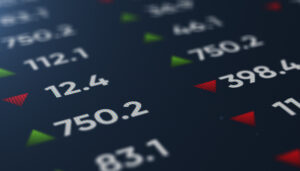
 10.12.2021 – It can happen that quickly: Wall Street has recovered its losses built up since Thanksgiving. Despite yesterday’s setback. If Scott Rubner, trader at Goldman Sachs, has his way, that was just the beginning. Omicron, tapering – it doesn’t matter. A mountain of investor money wants to be invested. In his opinion, the stock market lights have recently jumped to green. We shed light on the background.
10.12.2021 – It can happen that quickly: Wall Street has recovered its losses built up since Thanksgiving. Despite yesterday’s setback. If Scott Rubner, trader at Goldman Sachs, has his way, that was just the beginning. Omicron, tapering – it doesn’t matter. A mountain of investor money wants to be invested. In his opinion, the stock market lights have recently jumped to green. We shed light on the background.
Buy the dip
Rubner has been right so far: last Sunday he wrote to his clients that the small correction was over, he was buying the dip. In his December newsletter “Tactical Flow-of-Funds” he explained: “the #1 incoming question from investors this week: Does the selloff change the supply and demand picture for the rest of the year? Is this December 2018? What inning is it? Do you have hands made from diamonds or paper?” He went on to predict, “We have seen the lows for the year.
Then Rubner listed more than two dozen hard-to-digest macro theses in cryptic stock market-speak abbreviations, the essence of which we reproduce here. Bottom line: the red light has turned to green. The past few days have reinforced it. And earlier this week, heavily shorted stocks in particular pulled sharply higher. Tuesday brought the biggest short squeeze in six months, according to Goldman Sachs.
Buybacks and massive liquidity
Maga factor for a December rally are for the goldman first buybacks and an enormously bearish sentiment. The market still needs one to two weeks to switch completely to green, it was said last weekend. So that would be these days – perhaps the bulls can look forward to a Santa rally. Especially since the usual window-dressing of fund managers should speak in favor of it, i.e. the fact that the lords of money quickly stock up at the end of the year with those stocks that have done particularly well. Otherwise, they will say that they have overlooked the best stocks.
Biggest bull factor according to the Goldman Sachs expert: Enormous amounts of cash waiting on the sidelines. A total of $5.5 trillion in assets wanted to be invested in the financial industry. We remember: Rubner had already predicted a meltup shortly before Thanksgiving, resulting from a daily inflow of 15 billion dollars.
Go with the flow
Maybe trading is really quite easy at the moment. Money will be invested. Already about three weeks ago, Jonathan Wolf of the blog “Dealbreaker” wondered: “Has anyone considered that we might not be in a stock market bubble?” Wolf’s essence: “Are we in a stock market bubble? Possibly. Or maybe we’re just in an economy where companies are doing well because Americans are sitting on a big pile of cash that they accumulated over the course of the pandemic and are now doing everything they can to spend it. My money is on the latter.”
The fear for inflation
And now comes the big caveat: if the Consumer Price Index in the US this afternoon turns out to be more catastrophic than analysts had expected, then the hoped-for bull market is likely to come to a halt for now. If, for example, we get year-on-year inflation somewhere in the neighbourhood of 7 per cent, then fears of a heavy tapering and possible interest rate hikes will immediately start to circulate. So we are curious to see if we really do see a year-end rally. Bernstein Bank is keeping an eye on the matter for you!
Important Notes on This Publication:
The content of this publication is for general information purposes only. In this context, it is neither an individual investment recommendation or advice nor an offer to purchase or sell securities or other financial products. The content in question and all the information contained therein do not in any way replace individual investor- or investment-oriented advice. No reliable forecast or indication for the future is possible with respect to any presentation or information on the present or past performance of the relevant underlying assets. All information and data presented in this publication are based on reliable sources. However, Bernstein Bank does not guarantee that the information and data contained in this publication is up-to-date, correct and complete. Securities traded on the financial markets are subject to price fluctuations. A contract for difference (CFD) is also a financial instrument with leverage effect. Against this backdrop, CFD trading involves a high risk up to the point of total loss and may not be suitable for all investors. Therefore, make sure that you have fully understood all the correlating risks. If necessary, ask for independent advice. CFDs are complex instruments and are associated with the high risk of losing money quickly because of the leverage effect. 68% of retail investor accounts lose money trading CFD with this provider. You should consider whether you understand how CFD work and whether you can afford to take the high risk of losing your money.
